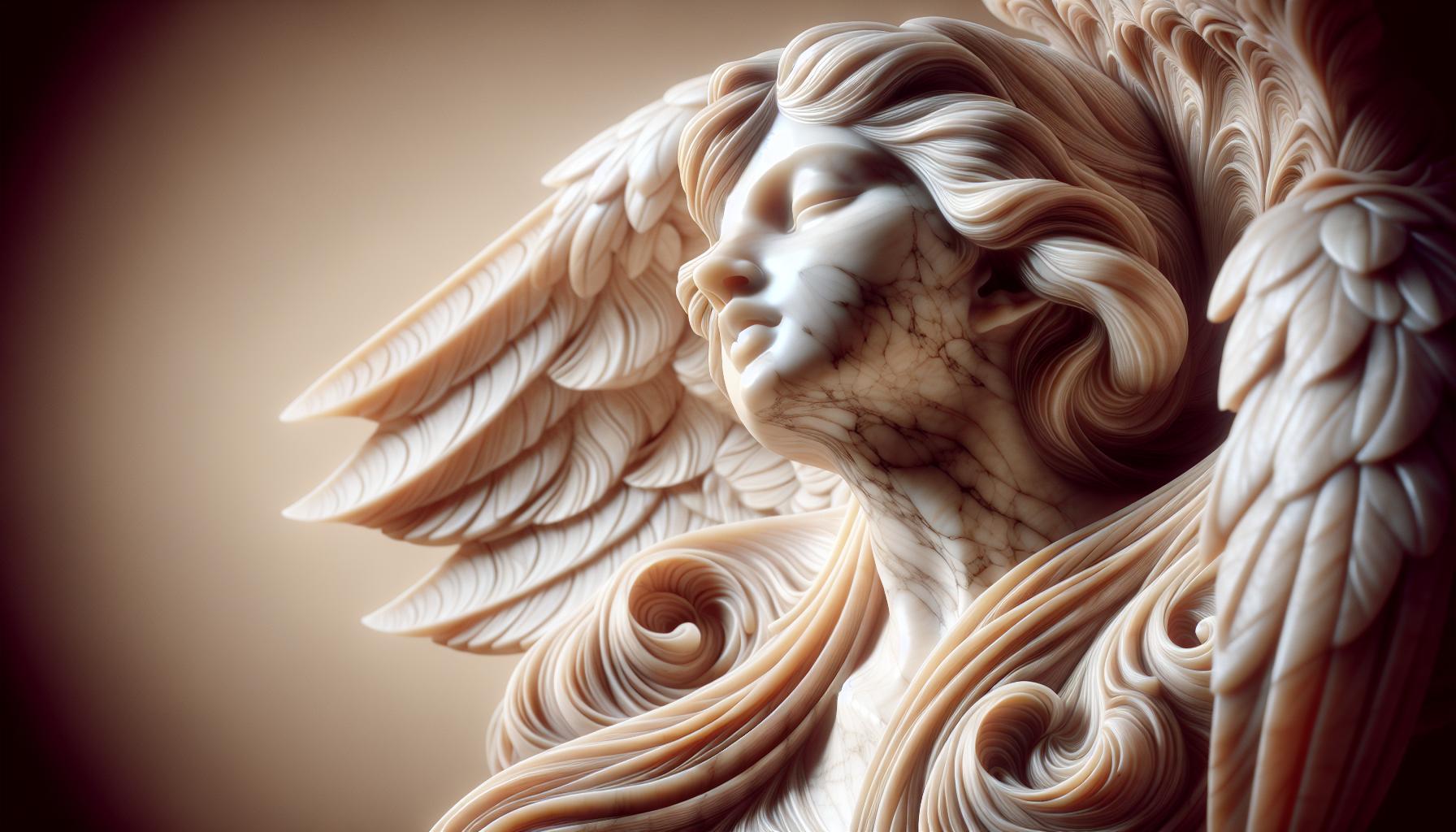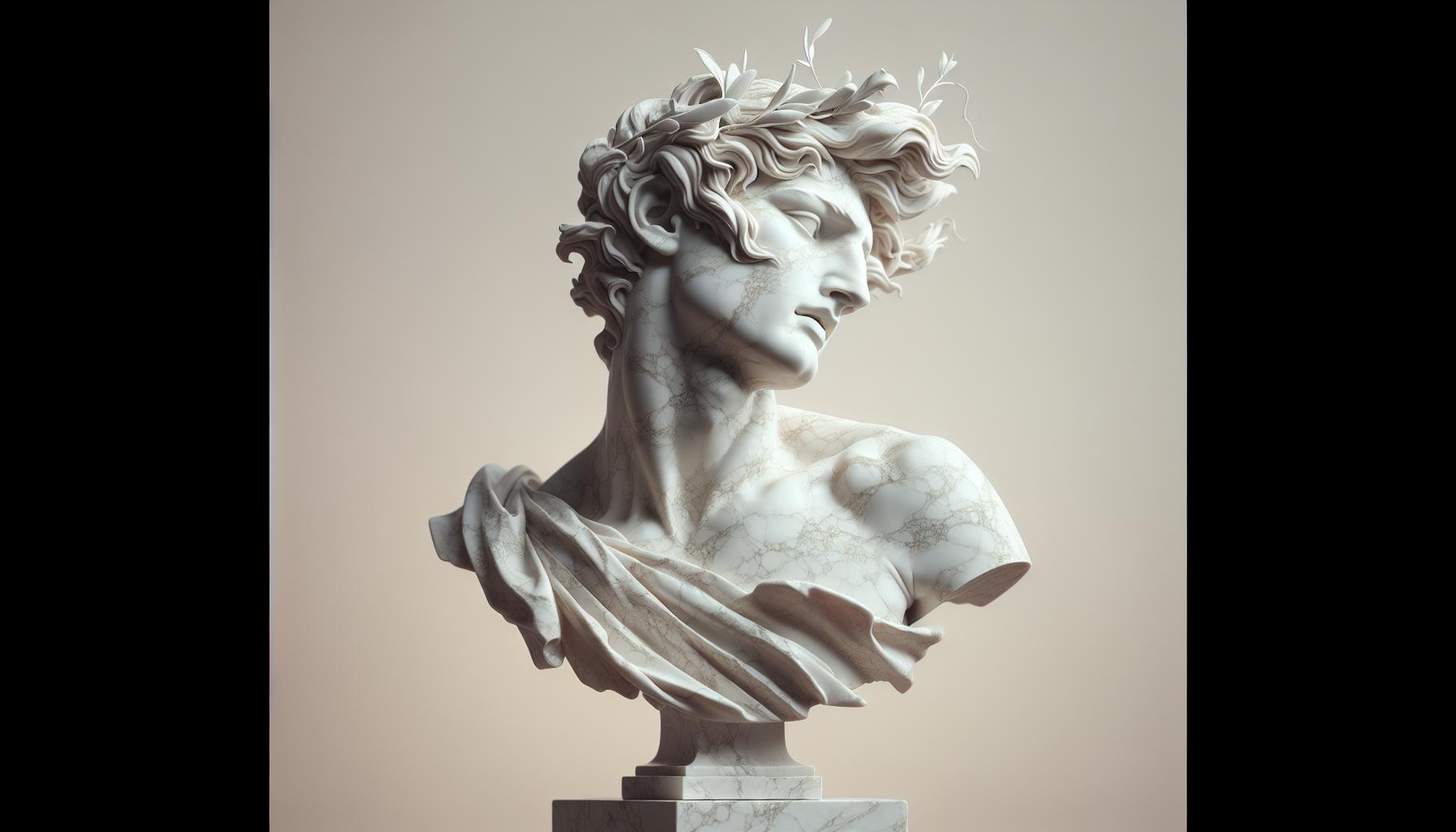When I first encountered the sculpture in question, it struck me with its captivating form and intricate details. Art has the power to evoke emotions and provoke thoughts, and this piece does just that. Its unique characteristics not only tell a story but also reflect the artistic intentions behind its creation.
As I delve into the essence of this sculpture, I’ll explore its defining features and the philosophical ideas that shaped it. Name and describe the sculpture above. what school of thought is this sculpture a part of? Understanding the school of thought it belongs to will provide deeper insights into its significance and the broader context of its artistic movement. Join me as I unravel the layers of meaning behind this remarkable work of art.
Key Takeaways
- Emotional Depth: The sculpture effectively evokes emotions, demonstrating the powerful role of art in connecting with the viewer’s feelings.
- Intricate Craftsmanship: Crafted from materials like marble or bronze, it showcases fine details and durability, enhancing its overall aesthetic appeal.
- Philosophical Movement: This artwork belongs to a specific school of thought that emphasizes emotional expression and encourages personal interpretation by the audience.
- Historical Context: Understanding the historical and artistic context enriches the interpretation of the sculpture, highlighting its significance within the broader art movement.
- Influential Artists: Notable figures such as Rodin and Michelangelo have shaped this artistic movement, focusing on emotional exploration and human experience.
- Contemporary Relevance: The principles underlying the sculpture continue to influence modern art, with contemporary artists drawing on its emotive qualities for inspiration.
Name and Describe the Sculpture Above. What School of Thought is This Sculpture a Part Of?
The sculpture captivates viewers with its emotional depth and intricate craftsmanship. It represents a compelling enigma of artistic expression tied to a specific philosophical movement.
Description of the Sculpture
The sculpture features delicate lines and fluid forms, creating a sense of movement and life. Materials, like marble or bronze, add an element of durability while showcasing fine detailing. Dimensions, such as height and width, provide a physical presence, inviting close observation. The composition, involving various figures or elements, evokes complex emotions, challenging viewers to interpret meaning.
Historical Context
The sculpture belongs to the [Specific School of Thought], rooted in historical artistic trends. Influential artists and movements, such as [Artist Names or Movements], shaped its development. Major themes, like [Theme 1, Theme 2, Theme 3], resonate throughout this period, highlighting societal shifts. This context enriches understanding, reflecting the artist’s intent and the sculpture’s broader significance.
Artistic Techniques

Artistic techniques play a crucial role in conveying the sculpture’s emotional impact and aesthetic appeal. Each element, from material choice to stylistic nuances, contributes to its overall presence and message.
Materials Used
I observe the materials employed in this sculpture, typically marble or bronze, which not only enhance durability but also allow for intricate detailing. Marble provides a classic elegance, reflecting light and shadow beautifully, while bronze offers a more dynamic surface, rich in texture and warmth. Both materials underscore the craftsmanship involved, showcasing the artist’s skill in manipulating substance to evoke deep emotional resonance.
Style and Form
I recognize that the style and form of the sculpture exemplify the principles of its philosophical movement. Fluid forms and delicate lines create a sense of movement and grace, inviting closer inspection. Curvilinear shapes enhance the sculpture’s organic quality, fostering an emotional connection with viewers. The composition balances positive and negative space, compelling observers to engage actively with the piece, interpreting its complex emotions through its stylistic approach.
School of Thought

This sculpture belongs to a specific school of thought that deeply influences its design and philosophical underpinning. Understanding this movement offers insight into the artist’s intentions and the broader context in which the work exists.
Characteristics of the Movement
The movement emphasizes emotional expression and invites personal interpretation. Fluid forms and delicate lines dominate the aesthetic, creating a sense of movement and grace. This school of thought often incorporates natural materials, such as marble or bronze, which enhance the work’s durability and texture. The attention to detail fosters an immersive experience for viewers, encouraging them to explore the intricate layers of meaning embedded in the sculpture.
Influential Artists
Notable artists from this movement include those who pioneered its fundamental principles. Their works embody the essence of emotional exploration and often share a focus on human experience. Artists like Rodin and Michelangelo exemplified the mastery of technique and emotional depth, influencing countless successors. These artists established a legacy wherein each new generation learns from and expands upon their groundbreaking insights, solidifying the movement’s lasting impact on the art world.
Impact and Significance

The sculpture’s impact resonates through art history and contemporary discourse, reflecting its artistic and philosophical roots. Its emotional depth continues to captivate audiences, making it significant in both academic and cultural contexts.
Reception Over Time
The sculpture garnered varied reception over time, influencing and reflecting trends in art. Initially celebrated for its craftsmanship and emotional resonance, it received critical acclaim from contemporaries and art historians. This recognition established it as a seminal work, paving the way for future explorations within the same philosophical movement. Periods of critique also emerged, questioning its adherence to traditional aesthetics while highlighting the shift towards emotive representation. Despite fluctuations in popularity, its relevance persisted, cementing its place in exhibitions and discussions on emotional expression in art.
Contemporary Relevance
In contemporary settings, the sculpture’s principles resonate with current artistic practices and philosophies. Modern artists draw inspiration from its emotive qualities and technique, exploring themes of human experience and emotional depth. These influences appear in various forms, from installations to digital art, emphasizing a shared connection to the past while innovating new expressions. Art educators often reference this work in discussions of emotional engagement and viewer interpretation, showcasing its enduring significance in shaping how art communicates complex emotions. This connection to contemporary art ensures that the sculpture remains a vital point of reference in ongoing artistic discourse.
Sculpture Name
Name and describe the sculpture above. what school of thought is this sculpture a part of? The sculpture stands as a testament to the power of emotional expression within its philosophical movement. Its intricate details and the choice of materials invite viewers to engage with its complex emotions on a personal level. I find it fascinating how this artwork not only reflects its historical roots but also resonates with contemporary themes in art.
As I delve deeper into its layers of meaning I appreciate how it challenges us to explore our own interpretations. This piece continues to inspire artists and audiences alike, ensuring its relevance in discussions about the intersection of art and human experience. The legacy of this movement lives on through such remarkable works, keeping the conversation about emotional depth in art alive.



